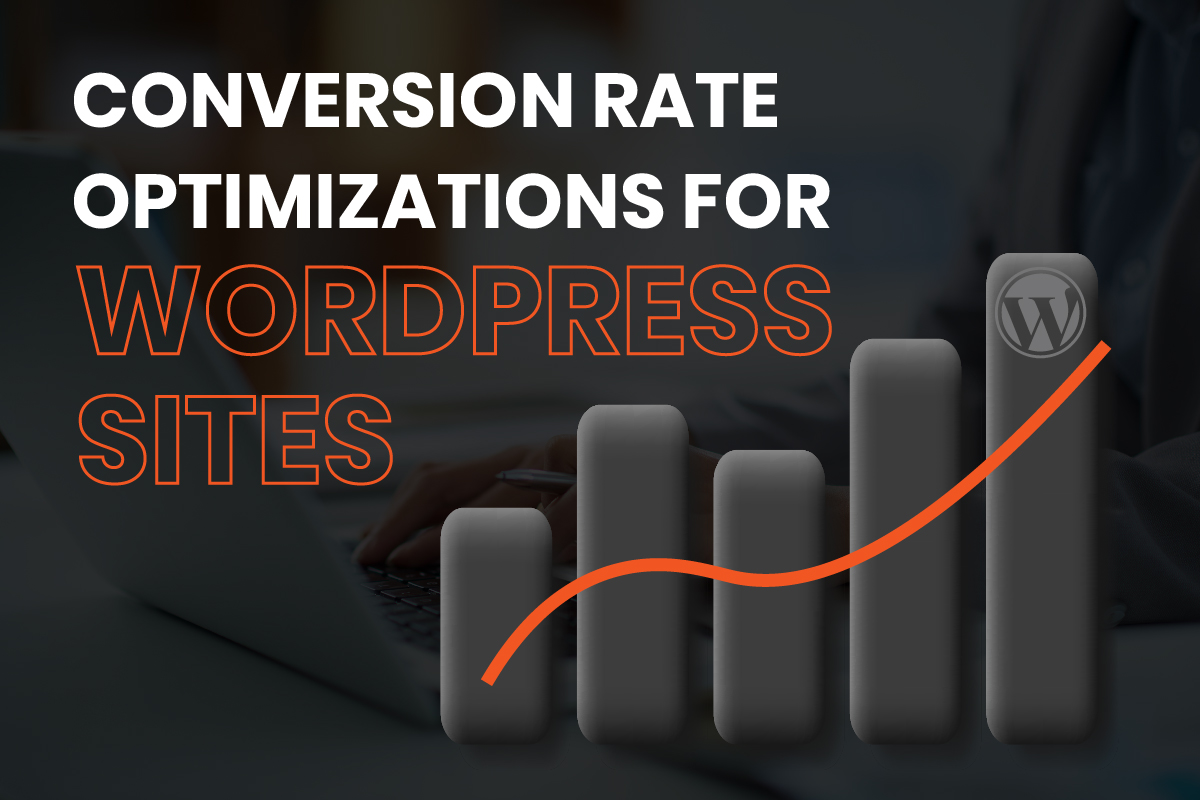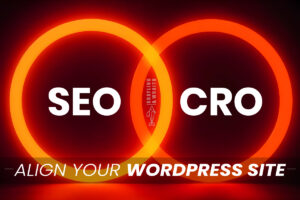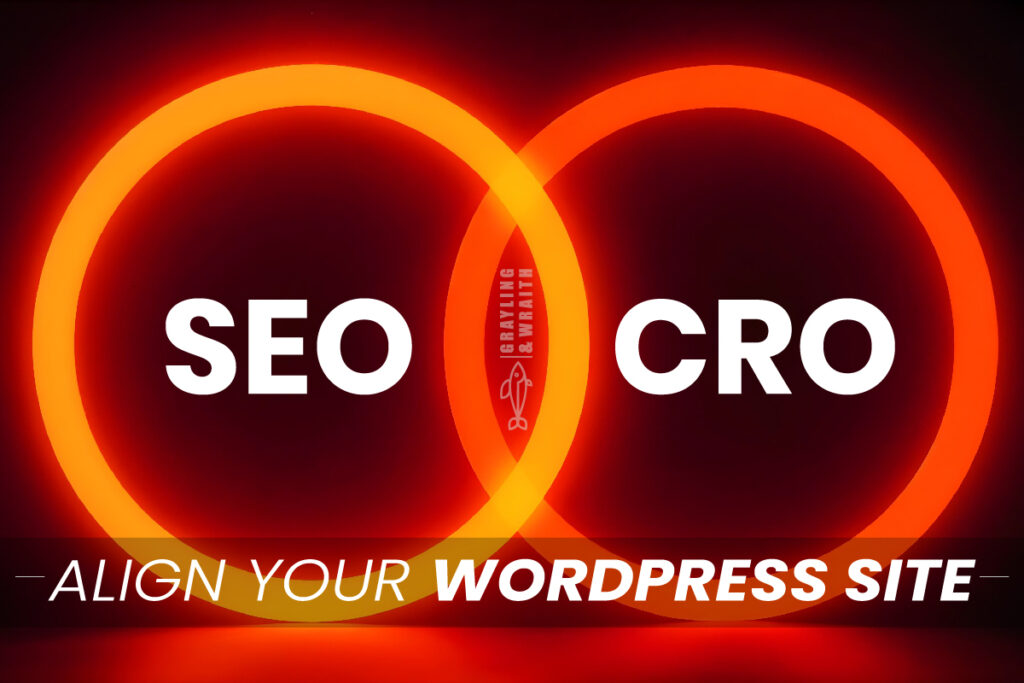You worked very hard to generate traffic for your website. Now what? Driving traffic to your website is just the beginning. Implementing CRO (Contract research organization) best practices is crucial for converting visitors into paying customers, which is what truly matters. When guests actively engage on your site, it’s a sign your website is meeting goals with CRO best practices. Prompting visitors into your conversion funnel is crucial. Without it, their return and desired actions are less likely. In 2020, US marketers had a 2.63% conversion rate. Globally, the rate was 4.31%. Conversion rates are key in CRO, showing how often people take desired actions like purchasing or subscribing.
Given that different end goals and desired actions exist, B2B website conversion rates are industry-specific. A conversion rate considered high in your industry might be deemed low in another.

Since conversions depend on your desired actions and goals, the conversion rate is indeed contextual. You might aim to convert your traffic into newsletter subscribers or shoppers. It’s important to note, as part of CRO best practices, that factors such as product type, traffic source, product cost, platform, and location can significantly impact conversion rates.
Adopting a Holistic Approach
While it may be tempting to focus solely on optimizing a single landing page’s conversion rate, this bottom-up approach can often lead to skewed results. Adhering to CRO best practices advocates for a more balanced and effective strategy. This involves adopting a broader, user-centric focus that evaluates your pages within their broader context, ensuring that every element of your website works together to improve overall conversion rates.
Optimizing Landing Pages: The Key to Enhancing WordPress Site Conversion Rates with CRO Best Practices
77% of landing pages are home pages
Instead of spreading your efforts thin across your entire site, it’s better to hone in on optimizing your landing pages. While it might seem logical to use your homepage as a landing page, doing so can lead to missed opportunities for conversion. Your homepage may not always be the most effective spot for turning site traffic into valuable leads or customers. Experiment with other landing pages that have similar traffic and content, such as specific product or category pages, to see if they perform better.
A landing page conversion rate of 2.6% to 6.1% is considered a good rate, with the average being 4.02%.

For 2024, the average landing page conversion rate is 7.12%
For 2024, the average landing page conversion rate stands at 7.12%. This rate was revealed by a comprehensive analysis conducted by GetResponse across 18 different industries. It offers a broad perspective on the efficacy of landing pages in engaging and converting visitors. This underscores the importance of implementing CRO best practices. While this average provides a useful benchmark, it’s crucial to recognize that conversion rates can vary significantly across industries. This variation is influenced by factors such as target audience, product type, and market competition.
Therefore, when setting expectations for your landing page’s performance, it’s essential to consider these industry-specific nuances alongside the overall average conversion rate. Applying CRO best practices involves not just aiming for the average but understanding the unique aspects of your industry and audience to optimize your landing page effectively, thereby exceeding average benchmarks and achieving superior conversion rates.
Agencies have a median conversion rate of 1.7%
Businesses spend much on sales, but consumers often don’t want to talk to agents. Customers have no patience for complex processes when signing up for newsletters or shopping online. Having too many required fields in your forms will decrease your conversion rate. This is because a more complex sales process, from form filling to sales calls and proposals, makes it harder to convert leads. According to Zero Risk Future, inconvenient delays in the consumer journey can lead to significant revenue loss. Specifically, these delays account for an aggregate loss of $325 billion annually. When purchase friction points are not effectively eliminated, consumers lose trust. Consequently, prospective clients may divert their attention, leading to a loss of billions in potential revenue.
The highest conversion rate at 6.2% comes from mobile apps and devices
Commerce conducted via mobile devices and their associated applications has grown exponentially, with over $1.36 trillion in digital sales recorded in 2021. Mobile marketing has vast revenue potential, yet most marketers tend to ignore mobile optimization.
Keep in mind that even small tweaks to your mobile optimization can lead to big wins. Overlooking these adjustments might mean missing out on potential customers, especially as your rivals forge ahead with their mobile optimization efforts.

Ebooks are effective
Ebooks have indeed proven to be highly effective tools for conversion. HubSpot’s findings are intriguing, showing that 55% of email submissions stemmed from e-book downloads. This highlights e-books’ role in reducing friction from initial website interaction to final action. Such low-friction benefits are key in CRO best practices, making e-books popular on e-commerce sites and LinkedIn.
Benchmarking your conversion rate against your industry’s average is highly recommended in CRO best practices. Indeed, it’s a solid approach to gauge your performance. By understanding your position relative to the industry average, you can set clear improvement goals. Ultimately, the aim is to reach the top 10 percent in your sector.
Exploring how visitors interact with your site is crucial for understanding their behavior—a key aspect of CRO best practices. Are they using your site as a research tool before making offline purchases, or are they comparing your offerings with competitors’ online? The interaction patterns of your visitors can greatly influence your conversion rates. Gaining insights into their behaviors enables you to tailor your content and strategies more effectively, converting them into loyal customers.
CRO best practices involve identifying your target audience, understanding their needs, and keeping an eye on your competitors’ strategies to meet these demands. Moreover, analyzing customer behavior to enhance your website’s conversion rates is a fundamental aspect of CRO, leading to increased business revenue by improving sales, reducing costs associated with sales calls, and expanding market share through digital channels. It’s the essence of monetizing your website traffic effectively.

Practical advice for creating exceptional landing pages
The perfect landing page doesn’t just happen. Without careful initial planning, a strategic launch, and continual data-driven adjustment thereafter, it doesn’t happen at all. These are the keys to the perfect landing page– launch a good page and revise it regularly based on analyses of site-specific data and conversion rates. This is why conversion
rate is important. Analyzing your conversion rate gives you the insights that you need to modify your landing page so that it will drive even more revenue to your business.
How Do You Optimize Your Landing Page with CRO Best Practices?
Once you understand how your visitors are behaving on your website, you will be able to develop informed tactics to increase the website conversion rate. Consider identifying potential problems before they impact your success by leveraging tools like heatmap tracking. A heatmap is a graphic illustration wherein data values are depicted by color. These tools are instrumental in revealing what aspects of your website or product pages are engaging users and what areas may need improvement.
Many websites and apps utilize heatmaps to monitor user behavior on their platforms. With these tools, you can observe where users are clicking and the duration spent on each section of your site. Consequently, employing a heatmap on your landing page allows you to understand how users are engaging with it.
Once you have gathered data from your heatmap, evaluate the tabulations of clicks, hovers, and scrolls. These categories of data let you see where visitors are clicking (showing interest) and not clicking (showing no interest). This will allow you to optimize for maximum conversions by revising those aspects of the website that are underperforming or by emphasizing those features that are working well.
Make Your Headlines Irresistible by Applying CRO Best Practices
Reflect on ensuring a stellar customer experience as you devise your optimization strategy. Visitors must grasp immediately upon landing on your page what the experience will entail and what they can anticipate. This clarity from the outset is key to a positive engagement.
Begin by presenting them with strong, clear, and engaging headlines. The headline is one of the first things visitors see when they browse your landing page. Every headline should be creative and unambiguous and should convey your message clearly and powerfully.
Use headlines to capture the attention of as many potential customers as possible to position your business as the thought leader in your industry. Headlines determine whether your visitors read your content or just keep scrolling, so provide value through your headlines that your readers can’t resist.
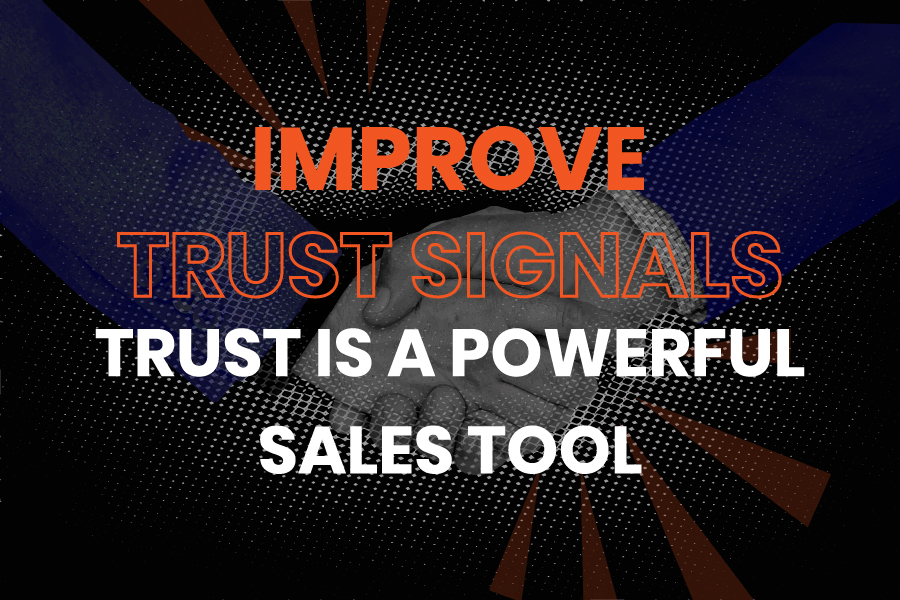
Improve Trust Signals with CRO Best Practices
Trust is powerful and influential, so much so that customers consider it to be among the three most important factors in their buying decisions. Customers are likely to buy when they can verify that the business is legitimate and trustworthy. Make your audience confident of your products, your services, and your dependable performance by incorporating elements that encourage your audience to stay and engage longer on your page.
Anything that can make your customers feel secure when they submit forms, sign up on your page or email list, or make purchases is technically identified as a “trust signal.” Adding press badges above the fold on your landing page can increase your conversion rate by at least 10%– a significant improvement. Additionally, adding customer reviews is also a significant trust signal and these help your potential customers visualize themselves using your products.

Split test critical elements of your landing page
When directing paid traffic to your landing page, the significance of split testing, or A/B testing, cannot be overstated. This process involves comparing different versions of a landing page to pinpoint which performs best. To understand what resonates with your audience and what might deter them, it’s recommended to experiment with various elements, such as:
- Combine a catchy headline, a clear call to action, and an appealing image.
- Ensure the headline copy is compelling and to the point.
- Design call-to-action buttons, such as “Subscribe” or “Buy Now”, to stand out.
- Strategically arrange the page layout and content placement for ease of navigation.
(for example, should the form be above or below the fold?)
Use A/B testing to identify the framing of the element that most effectively appeals to your audience.
For effective landing page testing, employing precise and reliable tools is essential to achieving the best outcomes. A strategic approach, such as using the Eisenberg brothers’ conversion pyramid, which outlines five levels of buyer needs, can greatly enhance your testing process. This method provides a comprehensive framework to evaluate and refine various aspects of your landing page, ensuring it meets the diverse requirements of your potential customers.
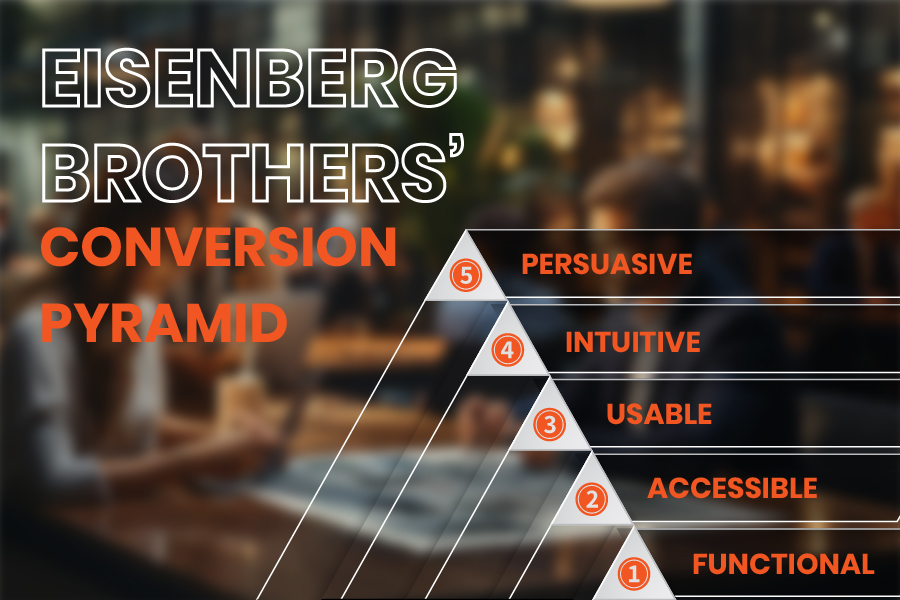
These levels are:
- Functional – Does your landing page create friction that discourages your users, or does it streamline fulfillment of a specific buyer need? Whatever you’re offering, your landing page shouldn’t have any feature that interrupts or delays the buyer journey.
- Accessible– Can your visitors access your landing pages from their mobile devices? It should be easy for your target audience to find your landing pages, no matter what devices they use. Optimize your landing pages for all devices and ensure that they are free from technical problems.
- Usable – De-clutter your landing page copy. Make it concise, direct, and powerful. Avoid overwhelming your visitors with unnecessary processes or imprecise and difficult navigation. The goal is to make visitors focus on your call to action.
- Intuitive- Are you providing a seamless user experience? Your visitors can only take your desired action if you encourage them with easy-to-operate navigation.
- Persuasive – Make each element on your landing page purposeful such that it provides a solution to a specific user problem or meets a user’s needs specific need. Educate, entertain, or gain the trust of your potential customers through valuable and engaging information.
Make images relatable
For a truly captivating landing page, consider using genuine photos that depict real-life scenarios. This approach helps establish a deeper connection with your audience. Steer clear of generic stock images and opt for more authentic, candid shots. Additionally, ensure your images are optimized for mobile viewing to prevent any distortion or pixelation. Incorporating alt tags also enhances your SEO efforts with Google.
Don’t ignore mobile optimization
Over half of all online traffic shopping comes from a mobile device. It is therefore crucial to ensure that your website is seamless across all devices. Most mobile users are accessing eCommerce sites with the intent to purchase, so it is in your best interest to prime your website for mobile viewing on all devices. This will improve the customer experience for your visitors, including product browsing, navigation, and exploration.
Your website should quickly update and refine your capabilities to serve whatever device your leads are using. Ensure all buttons, links, and calls to action fit the screen. Optimize visual content because this option is preferred over text for use on mobile devices.
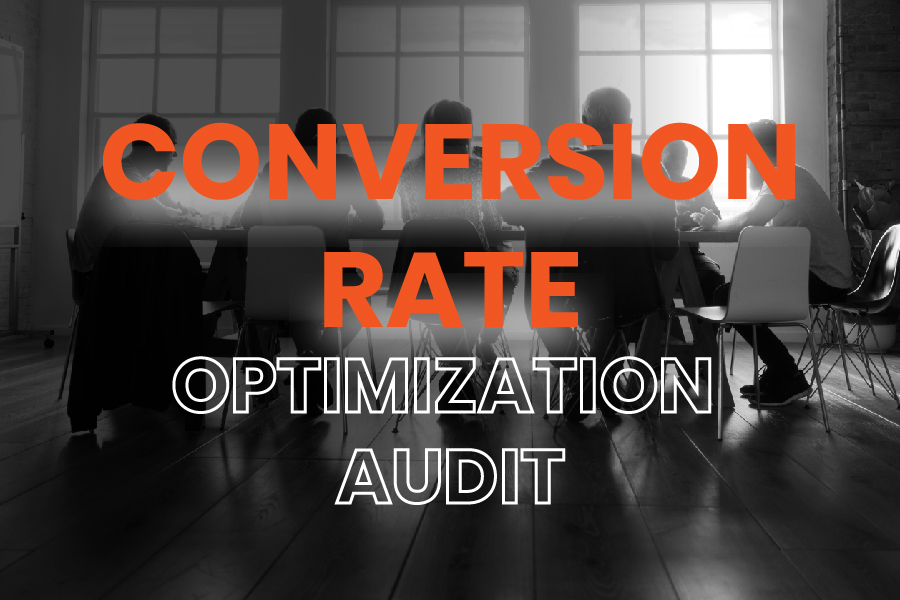
What’s Your Current Conversion Rate? Perform a CRO Audit with Best Practices in Mind
What’s your current conversion rate? It’s time to perform a CRO audit, a critical component of CRO best practices. By now, you’ve reformed and revised your landing pages, crafted perfect content and images, and applied the best strategies from industry experts to enhance your website’s conversion rate. However, despite these efforts, you might still notice that the anticipated significant improvement in conversions is elusive. What might you be overlooking?
While you might have a general sense of the underlying issues, pinpointing the exact problems without certainty makes it challenging to implement effective solutions. This is where the value of a CRO audit, a fundamental aspect of CRO best practices, becomes evident. A CRO audit empowers you to view your landing page through your customers’ eyes, providing a critical perspective often overlooked.
As an essential component of CRO best practices, a CRO audit provides a thorough, data-centric review of your sales process. This includes examining any interruptions and delays that may impede transactions. Furthermore, it delves into the customer journey from start to finish, yielding comprehensive insights. These insights are gathered from website analytics, heatmap data, A/B testing outcomes, and more. thorough approach is essential for identifying and rectifying barriers to conversion, ultimately aligning your efforts with the best practices in conversion rate optimization.
Strategizing for Enhanced Conversion: Key Audit Actions
A CRO Audit will allow you to determine what inhibits your visitors and hinders your conversions. Our Team suggests to you a method for conducting one:
- Record in writing your conversion issues
Writing down your conversion issues forces you to confront them directly and provides clarity. Be specific when writing them, e.g. “Only 2 out of 450 landing page visitors purchased my products.”
- Use analytics and data to understand your audience.
Your target audience may change as your website persona evolves. You may also find that your intended audience may not be the actual shoppers on your website. Your web analytics will help you pinpoint your demographic and their purchase behavior.
Heatmaps can give you insights into what your visitors do when they scroll through your website. You must know your audience and their interaction with your website since the user experience that you design should address in detail their interests and needs.
- Identify the bottlenecks
Armed with pertinent data, you can confidently identify the cause of your visitors’ inaction. It is not easy to determine the root causes of buyer behaviors, but useful patterns will emerge once you understand your audience and their behavior.
- Put in the work
There may be many reasons you are not converting at the rate you expected. However, after a comprehensive audit, you will come away with concrete ideas on where to focus your efforts to condition your audience and direct their behavior.
After your audit comes tweaking your landing page. You can approach this in two ways:
- Reform, revise, and reorganize the elements on the page – This optimization approach is applicable if your conversion rate is in the acceptable range and you want merely to refine further your strategy. Ensure that you adjust only one element at a time and subject it to individual testing.
- Overhaul your entire page – If the conversion rate for your entire page is not in the reasonable range of 2.6% – 6.1% or if your page is generally performing poorly, a complete overhauling of it may be the best answer. Build a new page based on hard data and on your new insights instead of exclusively relying on aesthetic appeal to draw in visitors who can be persuaded to act in support of your business goals.
A CRO audit should be a part of your CRO process. You must apply the best practices suitable to your actual visitors as identified by your own CRO testing and must not rely on practices that were identified by some other process for some other demographic. Testing in this manner gives your CRO campaigns a better chance of improving your conversion rates.
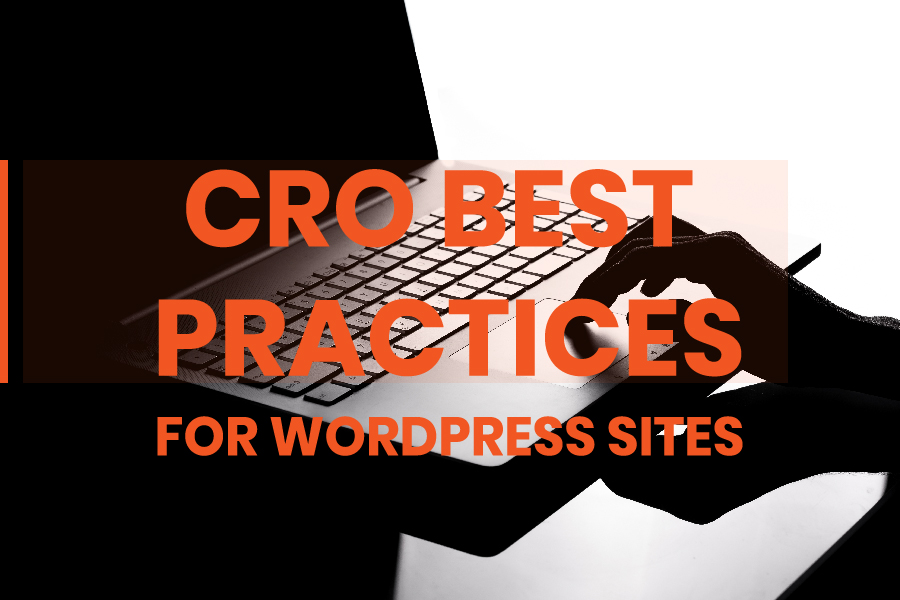
CRO best practices for WordPress sites
WordPress is a flexible platform perfect for testing conversion rate optimization strategies. The attractiveness of a WordPress website lies in its properties as a test-bed where you can apply some changes by yourself rather than relying on professional developers, thanks to its content management system.
Here are some tactics to boost WordPress conversion:
Define your goals
Initially, it’s wise to concentrate on a single objective for each webpage, ensuring it’s fully aligned with your broader marketing goals. However, attempting to meet all your marketing objectives on a single page can lead to confusion and lack of focus. Therefore, by setting a clear goal for each page, you can more effectively direct your users through their journey, providing them with straightforward navigation and a coherent flow of content.
Trust the data
At the core of any successful CRO process lie data-driven insights. As a website owner, it’s essential to grasp not only how each page converts but also how each alteration impacts the page’s conversion rate. Consequently, conducting a CRO audit becomes crucial, serving to unearth those pivotal insights that pave the way for informed, data-driven modifications, ultimately enhancing the effectiveness of your pages.
Always split-test or A/B Test
Many factors affect your conversions, and insights from a CRO audit will give you an idea of which elements to update. A/B testing is one facet of CRO, wherein you create and continuously split-test different versions of your landing page and its set of elements to discover which one produces the best result. The page with the optimum results will serve then as the new landing page while testing continues using this updated page as the new benchmark.
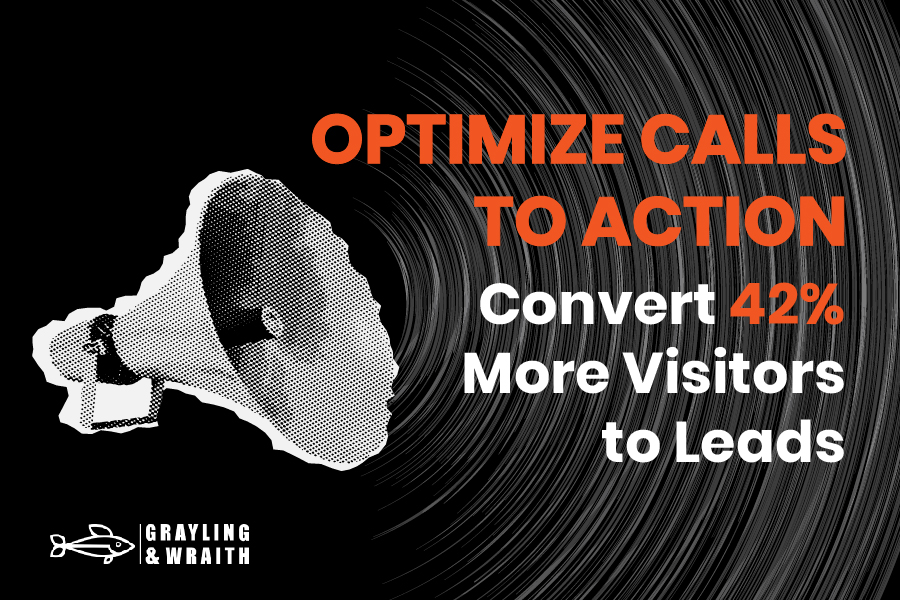
Optimize Calls to Action
The call to action (CTA) should be prominent and irresistible but not intrusive and distracting. Placement, color, and size are crucial in the effort to persuade your interested visitors to perform your desired action. A landing page with several CTA opportunities distributed throughout can generate up to 220% more leads than a page with CTA placement only above the fold. Furthermore, when you personalize your CTAs, you can convert 42% more interested visitors to customers. Offer value propositions– a simple summary explaining why a customer should choose your product or service– and make your CTA clear and distinct.
Increase website speed
To enhance page load speeds, which significantly influence conversion rates, it’s advisable to streamline your site. Consider eliminating non-essential plugins, compressing images for faster loading, and utilizing caching to minimize latency and improve overall site performance. These steps can be crucial in maintaining an optimal user experience and retaining your audience’s attention.
Improving your conversion rate is a simple matter once you understand your audience and their behavior. CRO requires clear goals and continuous testing and adjustment to achieve your best conversion rate.
It’s recommended to take into account the following factors in your CRO strategy:
- Design the user journey from arrival to conversion.
- Present SEO-focused content that attracts the right traffic.
- Use purposeful elements that contribute to your overarching business goal.
- Create straightforward, logical, easy-to-use landing pages containing compelling imagery, useful content, and defined CTAs.
- Manage carefully the technical aspects of your site to ensure a seamless and friction-free user experience and improve search engine ranking.
How to Increase WordPress Conversions by 50% in One Day Using CRO Best Practices
After you acquire new traffic on your site, turning them into paying customers is your next challenge. A higher conversion rate means that more people buy from you, sign up for your newsletter, subscribe to your blog, or do whatever else you want them to do on
your site.
To boost your WordPress site’s conversion rate, consider implementing the following strategies, which could potentially enhance your conversions by up to 50% almost instantly.
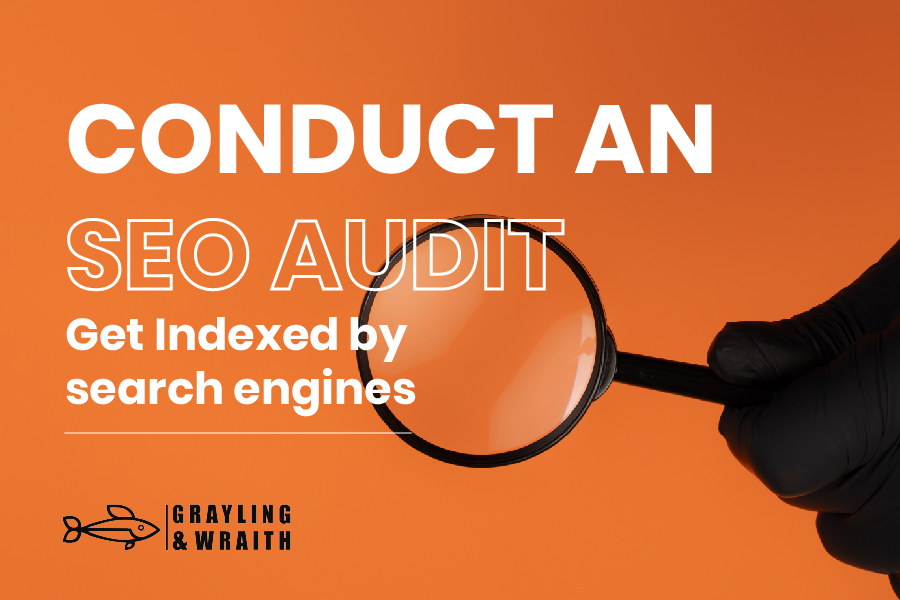
Conduct an SEO Audit
Websites on the first page of Google have a click-through rate (CTR) of 31.7%. You can have the most attractive and user-friendly website in the world, but if it doesn’t get indexed by search engines, you cannot generate leads. The more traffic and views you get, the better your chances of improving your conversion rate. Performing an SEO audit allows you to see what your website needs to improve its indexing and raise its ranking. After you determine the lapses and omissions, resolve these issues and your visitor numbers will climb and your conversion rate will show notable gains.
Reduce the friction from the customer journey
Our Team suggests that you keep everything short and simple. Whether it be forms, page loads, videos, or copy, your target audience has a short attention span and little patience. The best way to keep your visitors interested and engaged is to reduce friction by simplifying their user experience, i.e., eliminate interruptions, distractions, confusion, and delays. The less the friction, the quicker they will take your desired action. Improve your site load speeds and page navigation, provide clear instructions, and make your CTA obvious. The goal is to make your audience focus on your desired actions. Avoid overwhelming your visitors with too many elements and options.

Add Social Proof as Part of CRO Best Practices for WordPress Sites
Social proof is a trust signal to your audience and to search engines. Humanize your brand by incorporating social profiles and customer reviews into your website. Over 90% of customers read reviews before purchasing, so it helps to dedicate a review section to your website. Reviews also increase total conversions by 3% or more.
Customize content
Personalized and localized content drives conversion and builds trust. If you have a brick-and-mortar store, adding “Near me” or “close by” keywords can attract local
customers as these terms grew by more than 900% over two years. Appeal to your audience by producing relevant content and personalized offers. Don’t forget to optimize
your website for local searches.

Add live chat support
Improve the customer experience by providing on-demand customer support. Live chat resolves customer issues immediately and helps increase conversions by as much as 20%. A Live Chat opportunity also provides a positive brand impression and improves credibility.
Turn your WordPress site into a sales machine
Conversion rates are the driving force of any marketing campaign. You don’t have to try every trick in the book to skyrocket your conversion rate. The best way to drive your
conversion is to set goals, make decisions and revisions based on accurate data, thoroughly understand your audience, and test, test, test. Eventually, you’ll give your audience everything they want, and your WordPress site will become a productive demand-driven eCommerce enterprise.
Turning Clicks into Conversions: The Art of Mastering Your WordPress Site’s Potential
Optimizing your WordPress site for higher conversion rates is not just a task; it’s an ongoing journey that intertwines CRO best practices with a profound understanding of your audience, strategic foresight, and relentless testing. Utilizing the strengths of A/B testing and analytics, coupled with the creation of compelling and persuasive content, becomes pivotal in this endeavor. Each element on your site is a vital piece of the puzzle, meticulously working to steer visitors toward the actions you desire them to take.
The cornerstone of successful conversion rate optimization, underpinned by CRO best practices, is delivering a seamless and intuitive user experience that resonates with your visitors’ needs and surpasses their expectations. By anchoring your strategies in data-driven insights, embracing the pillars of CRO best practices, and fostering a culture of iterative enhancements, you position your WordPress site not just to perform better but to excel. This rigorous approach doesn’t just amplify conversions; it solidifies your online presence, setting a new benchmark for excellence in your digital domain.
Keep your goals clear, trust the data, and always prioritize the user journey to transform your WordPress site into a conversion powerhouse.
Explore further insights by reading our additional article on SEO SERVICES, where you’ll find expert strategies and in-depth analysis to enhance your digital marketing approach.

